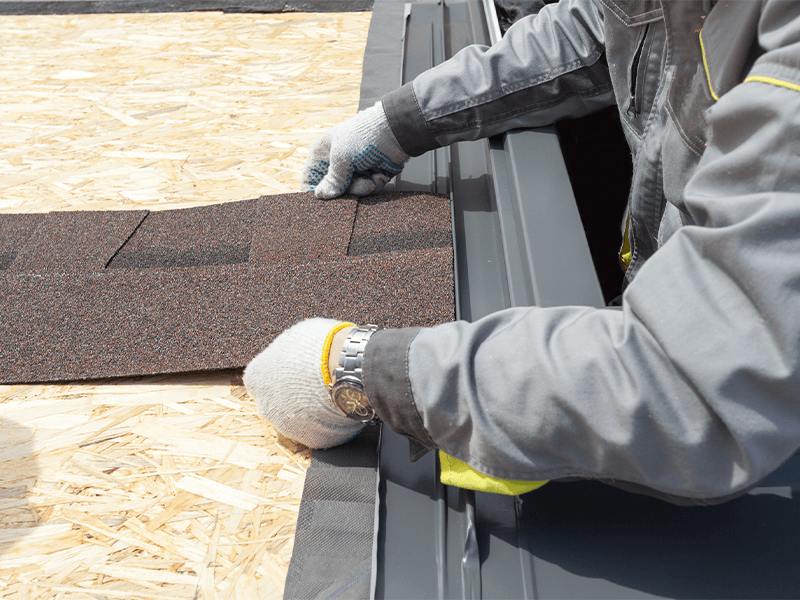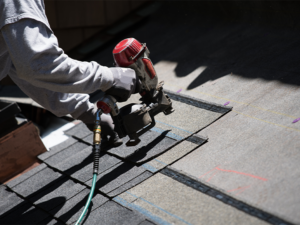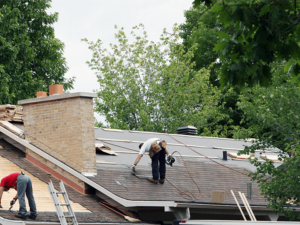
A properly installed roof is a marker of safety and durability in any home. However, as roofing systems endure weather elements and natural wear over time, they’re prone to experiencing all sorts of damages—some of which homeowners may knowingly or unknowingly overlook. To maintain the integrity of your space and prevent costly repairs later on though, it is important to learn to recognize the signs that indicate a need for a roof replacement.
Age of the Roof
An asphalt shingle roof typically lasts between 20 to 25 years, influenced by factors such as climate, maintenance, and installation quality. As the roof nears this age, it’s wise for homeowners to schedule a professional inspection to evaluate its condition.
Even if a roof shows no visible signs of deterioration, it may not protect the home effectively once it surpasses its expected lifespan. Delaying replacement can lead to more extensive and costly structural issues.
Consideration should also be given to the roof’s age in relation to any manufacturer warranties or guarantees, which can provide insight into the expected durability of the materials. If the roof has been previously repaired or if new shingles were added over old ones, this can accelerate the need for replacement. This layering can conceal underlying damage that affects the roof’s integrity.
Shingle Damage
Cracked, buckled, or missing shingles are clear signs of roof damage. These issues can allow moisture to penetrate, leading to rot and mold inside the home. Addressing these problems promptly helps forestall further damage.
Dark streaks or patches on shingles might indicate algae or fungus growth. Although algae itself isn’t immediately harmful, it often suggests that the shingles are retaining moisture and may not be performing well.
Another sign of shingle wear is finding granules in the gutters or downspouts. Shingles shed these granules over time, which protect the roof from UV rays and weather. Excessive granule loss typically means the shingles are nearing the end of their lifespan.
Curled shingles, which can result from weather wear or poor attic ventilation, are more vulnerable to wind damage and water infiltration. Curling shingles indicate a need for a roof inspection and possibly a full replacement.
Missing or Loose Shingles
Missing or loose shingles are unmistakable signs of roof damage. They can expose the roof deck, making the home susceptible to water intrusion and potential interior damage. Loose shingles often result from improper installation or severe weather, such as strong winds or hail. These conditions can weaken the shingle’s attachment, leading to detachment and reducing the roof’s effectiveness.
The impact of missing shingles extends beyond the gaps themselves, as adjacent shingles may also suffer due to the lack of reinforcement. This can lead to a chain reaction of roofing problems and accelerate the deterioration process.
If inspections reveal significant numbers of missing or loose shingles, a simple repair might not be enough. In such cases, a full roof replacement could be a more practical and cost-effective solution. A professional roofer can evaluate the extent of the damage and recommend the best approach.
Roof Leaks and Water Damage
Frequent leaks are a strong indicator that a roof might need replacing. Water stains on ceilings or walls suggest compromised roofing materials and should prompt an immediate inspection.
Water damage can lead to more severe issues, such as compromising the structural integrity of the home. Rot in support beams or the roof deck from prolonged moisture exposure may necessitate a roof replacement to prevent further damage.
A musty odor in the attic or upper floors could signal hidden leaks. These leaks can lead to mold and mildew growth, which deteriorates the roof and poses health risks. Drips or puddles in the attic during heavy rain indicate that the roof’s waterproofing has failed. Such breaches often warrant considering a full roof replacement.
Sagging Roof Deck
A sagging roof deck is a major sign of structural weakness, indicating that the roof’s support may be inadequate. This sagging often results from prolonged moisture exposure or the weight of accumulated snow.
If the roof deck sags between the rafters or trusses, it usually means the decking material has been compromised. Water penetration can cause the wood to rot, leading to these structural deformities. Immediate professional attention is needed for a sagging roof. This condition often hints at failing internal structures, which could lead to a collapse if not addressed, posing serious safety risks.
A qualified roofer can assess whether the sagging is localized or widespread. While localized issues might be repairable, extensive sagging typically requires a full roof replacement to ensure stability and safety.
Reliable Roof Replacement For You
At Lifetime Roofing, we understand the importance of a secure, reliable roof over your home. That’s why our team is dedicated to providing top-quality service and ensuring your home remains protected for years to come. If you’re experiencing any of these issues, don’t wait for the damage to worsen. Contact us today for a thorough inspection and expert advice on the best solution for your roofing needs.




